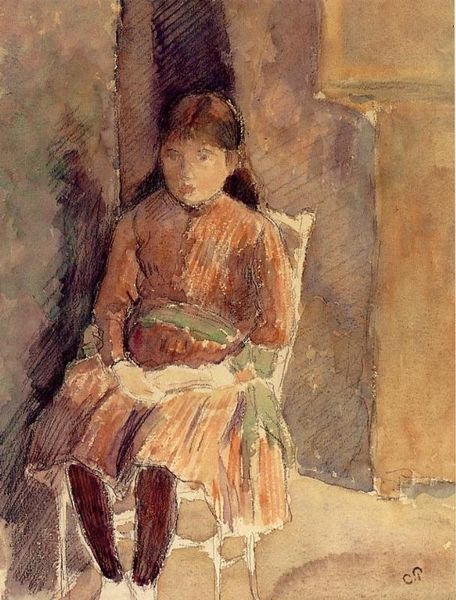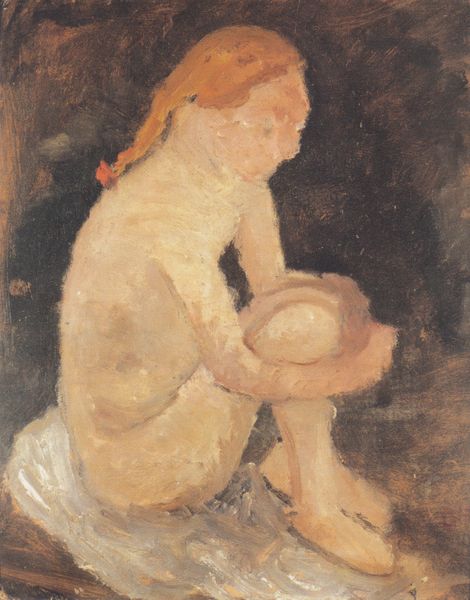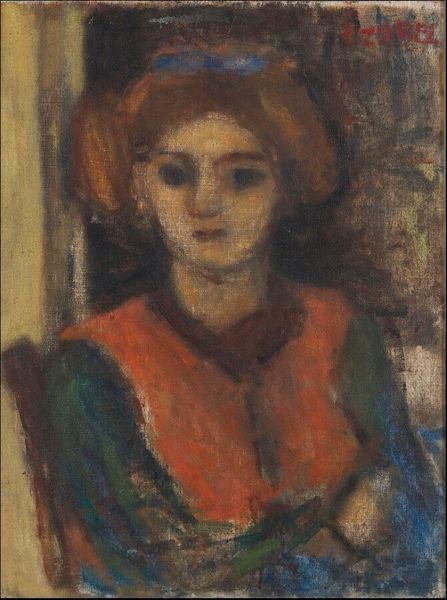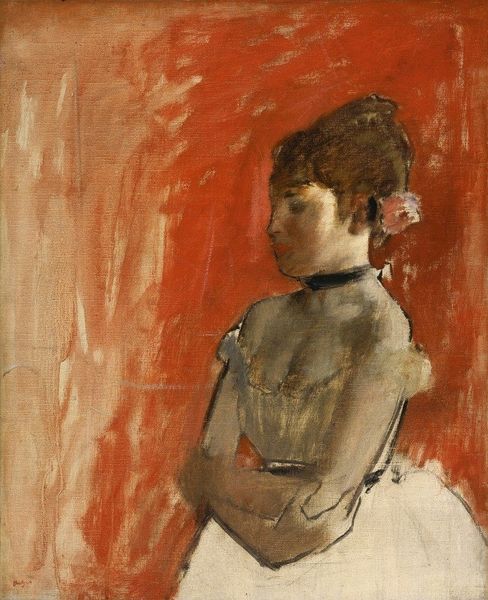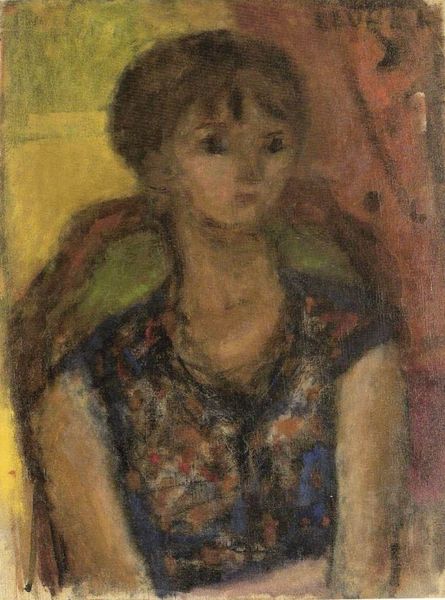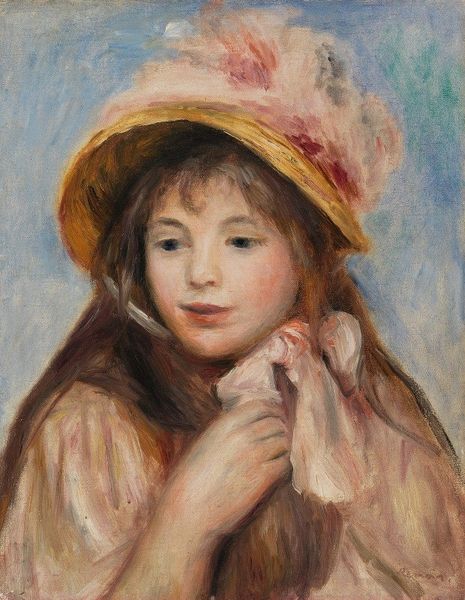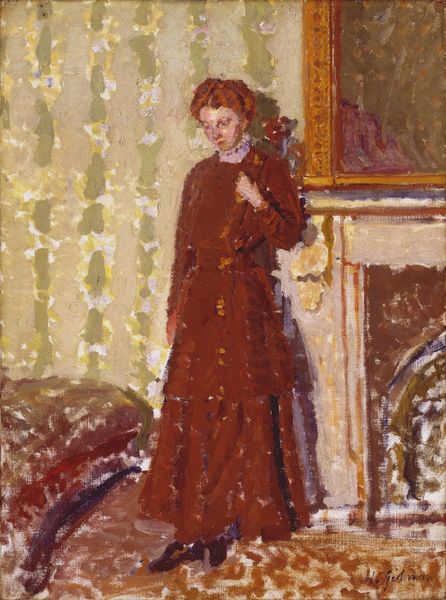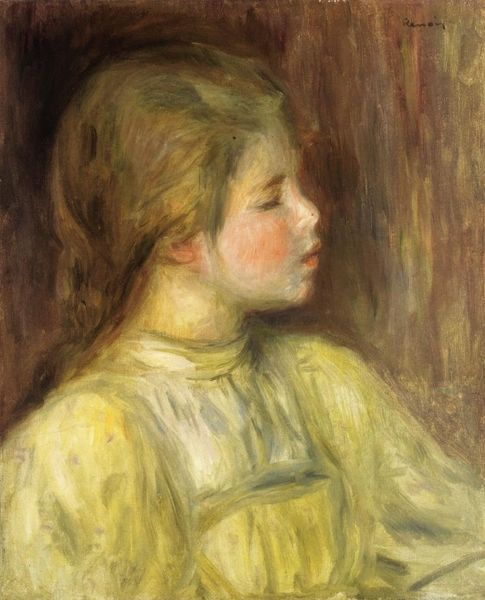
Copyright: Public Domain: Artvee
Editor: Here we have William Glackens' "Woman Seated on Red Sofa," painted around 1912 or 1913. The impasto is really striking, it looks so thick. What can you tell me about it? Curator: Well, first notice the materials: oil on canvas. Glackens’ application isn’t just about aesthetics; it’s a declaration. This isn’t the polished surface of academic painting; it’s about showing the labor, the very physicality of applying paint. How does that materiality impact the image for you? Editor: It makes it feel less formal, somehow. Almost unfinished, raw. I guess it brings the actual *making* of the painting into focus. Curator: Exactly! And that rawness aligns with the changing social landscape of the time. Consider the rise of industrial production and mass consumption. Glackens is, in a way, refusing to create a perfectly polished, easily consumable image. He's showing you the brushstrokes, the labor, the human element. Think about the difference in cost between these new synthetic colors and the pigments of previous generations of artists. The accessibility afforded to these artists had an impact. Editor: That makes a lot of sense. So the medium is part of the message? Almost like the painting itself is performing its own making? Curator: Precisely. It is a commentary, maybe unconscious, about the rapidly changing material culture. Also, think about the red sofa. The choice of material – plush velvet, a signifier of burgeoning bourgeois comfort. Glackens juxtaposes the sitter with the *stuff* that enabled that leisure. Editor: It's amazing how thinking about the materials and production gives us so much to consider. I never would have seen that just looking at it! Curator: Exactly. By exploring these aspects of making and materiality, we start to perceive art less as simply objects and more as complex cultural products reflecting the realities of labor, consumption, and social status.
Comments
No comments
Be the first to comment and join the conversation on the ultimate creative platform.
